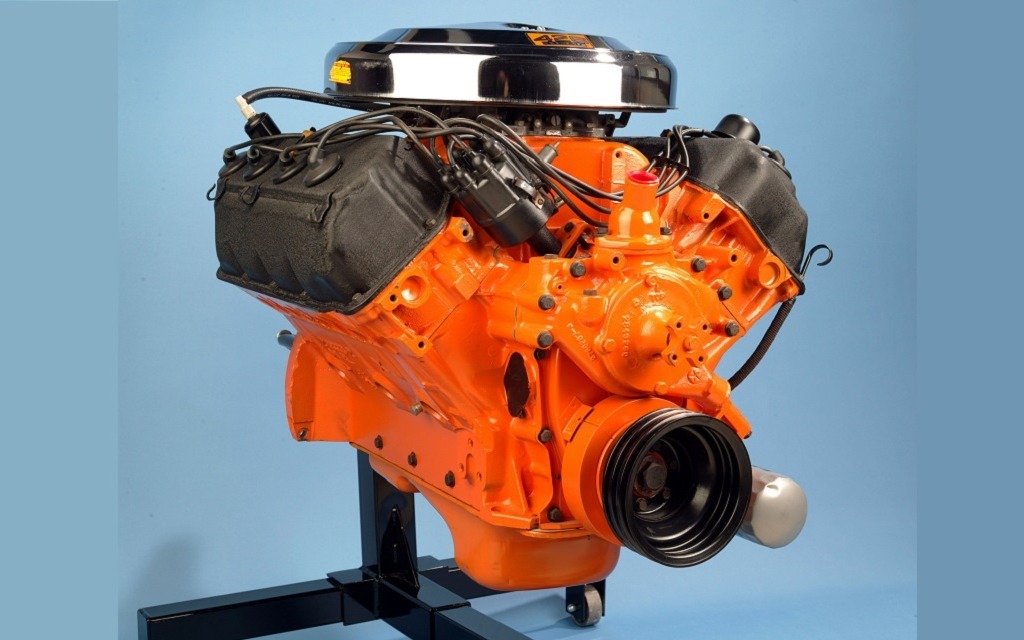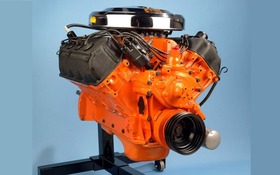The 426 Hemi Turns 50 !
It’s February 23, 1964. At the Daytona 500, Chrysler unveils an engine that will go on to become a legend: the 426 Hemi.
During the mid-60s, the race to build the world’s most powerful engine was extremely intense. Massive American V8s offered more and more cubic inches and generated more and more power. It was impossible to know who would come out with the fiercest: General Motors, Ford or Chrysler. In the years that followed, this exponential surge peaked with the 426 Hemi. Its performances might not have been the best (the Chevrolet 454 LS6 and Ford 429 SCJ produced more power), but in terms of prestige, it was unbeatable.
In a bid to keep insurance costs down, Chrysler claimed that its 426 Hemi produced 425 horsepower, but it actually delivered a lot more. Its maximum torque was 490 lbs.-ft.! And it was equipped in cars that had virtually no brakes, bias-ply tires and an archaic suspension system. But that’s a whole other story.
The Hemi name comes from the hemispherical shape of the combustion chambers. Essentially, this shape allowed for the use of two cylinder valves that face each other instead of being positioned side by side. This allowed for bigger valves and produced a swirl in the cylinder head for improved efficiency. Finally, it also improved gas combustion. However, the downside (according to some forums) is that adjusting these valves is very hard to do.
The very first hemispherical engine dates back to the 1950s. Built by Chrysler, the FirePower (as it was called) was a 331-cubic inch V8 that produced 180 horsepower. By 1956, its displacement was up to 354 cubic inches and its output was 280 or 340 horsepower, depending on the version. The next year it reached 392 cubic inches (290 or 325 horsepower). Adapted versions of this engine were used in Dodge and DeSoto products. In 1958, however, the hemispherical chambers were replaced by wedge chambers. From that point all the way through to 1965, wedge engines saw their displacement soar from 350 cubic inches to 440—and note that it was 426 in 1964.
The 426 Hemi was first used in race cars and thus not available to the public. That would come later and last from 1965 to 1971. Chrysler had the wisdom of patenting the Hemi name, and it wasn’t long before this engine became incredibly popular. In 1964, almost all NASCAR races were won by cars equipped with the Hemi, which resulted in the engine being banned the following year. You’ve got to admit that there’s no better way of improving an engine’s rep! And since just 11,000 were built, each unit’s value skyrocketed.
The 426 Hemi was retired in 1971. Pollution control laws combined with an increase in safety awareness, gas prices and insurance costs led to the demise of this monstrous engine dubbed “The Elephant.”
In 2003, Chrysler revived the Hemi name with a 5.7-litre mill that unleashed 340 horsepower and 390 lbs.-ft. of torque. It powered various Chrysler, Dodge and Jeep models. Next, a 6.1 Hemi appeared in SRT models, before a 6.4-litre (392 cubic inches, just like back in the good old days) graced the super popular Dodge Challenger 392 from 2005 right up till today.
If you’re so inclined, you can buy brand-new a 426-cubic inch V8 for less than $20,000 (RB Hemi Crate). Then all you have to do is add a transmission, water pump, starter, carburetor, etc.










